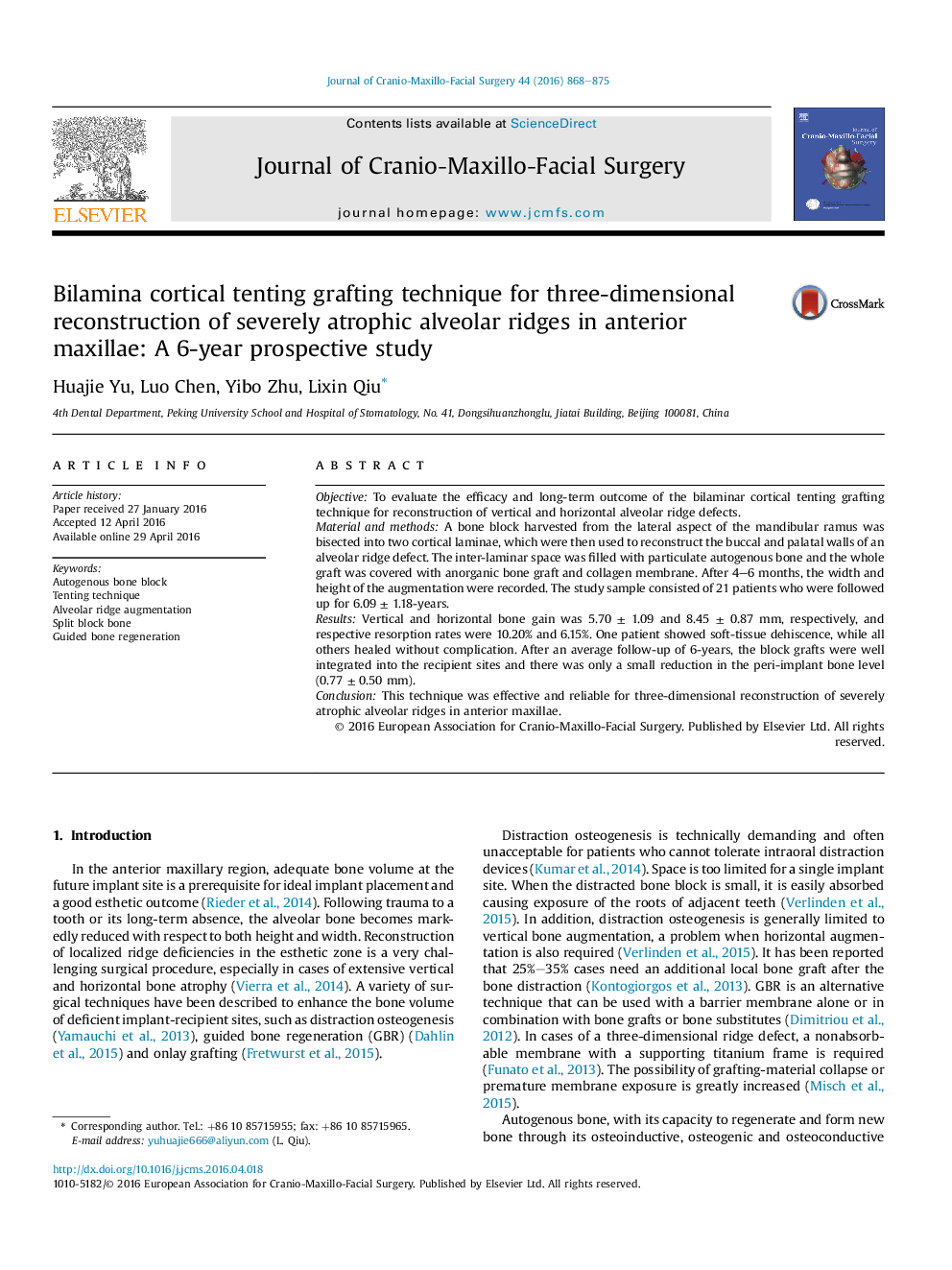| Article ID | Journal | Published Year | Pages | File Type |
|---|---|---|---|---|
| 3142259 | Journal of Cranio-Maxillofacial Surgery | 2016 | 8 Pages |
ObjectiveTo evaluate the efficacy and long-term outcome of the bilaminar cortical tenting grafting technique for reconstruction of vertical and horizontal alveolar ridge defects.Material and methodsA bone block harvested from the lateral aspect of the mandibular ramus was bisected into two cortical laminae, which were then used to reconstruct the buccal and palatal walls of an alveolar ridge defect. The inter-laminar space was filled with particulate autogenous bone and the whole graft was covered with anorganic bone graft and collagen membrane. After 4–6 months, the width and height of the augmentation were recorded. The study sample consisted of 21 patients who were followed up for 6.09 ± 1.18-years.ResultsVertical and horizontal bone gain was 5.70 ± 1.09 and 8.45 ± 0.87 mm, respectively, and respective resorption rates were 10.20% and 6.15%. One patient showed soft-tissue dehiscence, while all others healed without complication. After an average follow-up of 6-years, the block grafts were well integrated into the recipient sites and there was only a small reduction in the peri-implant bone level (0.77 ± 0.50 mm).ConclusionThis technique was effective and reliable for three-dimensional reconstruction of severely atrophic alveolar ridges in anterior maxillae.
